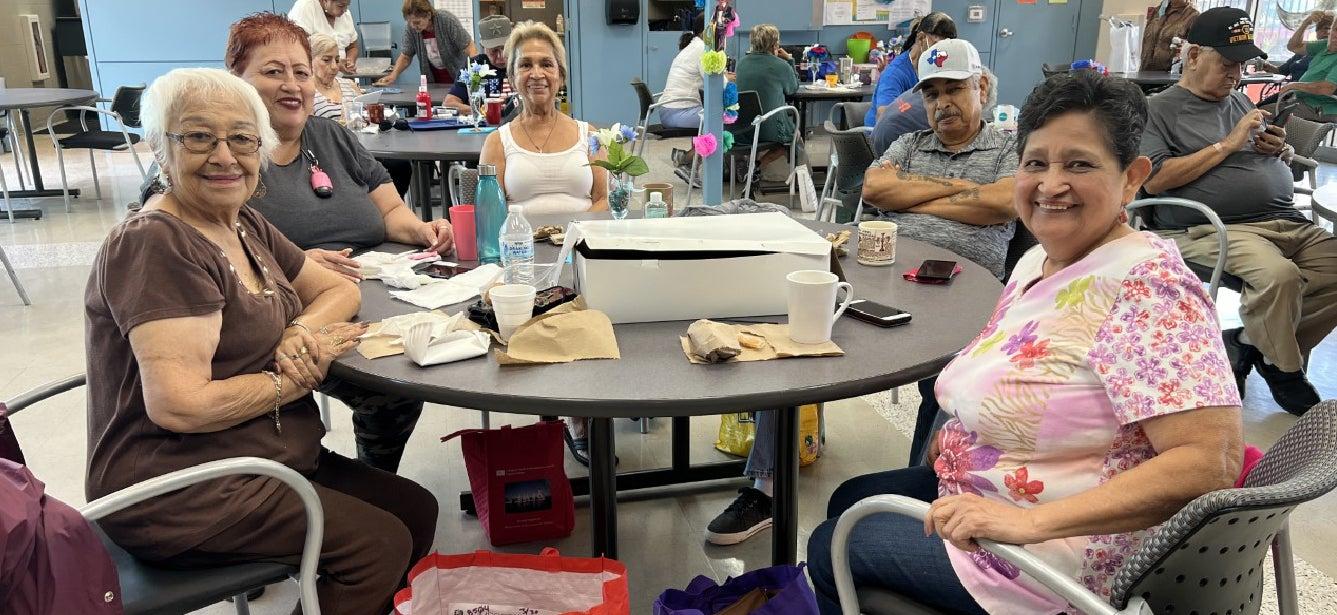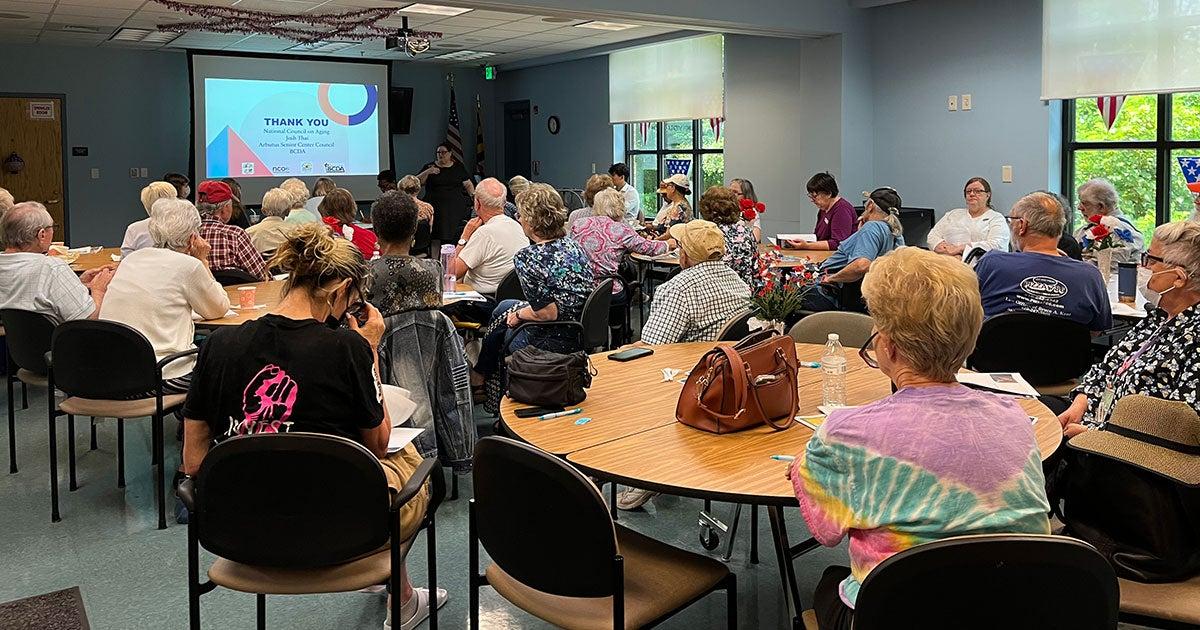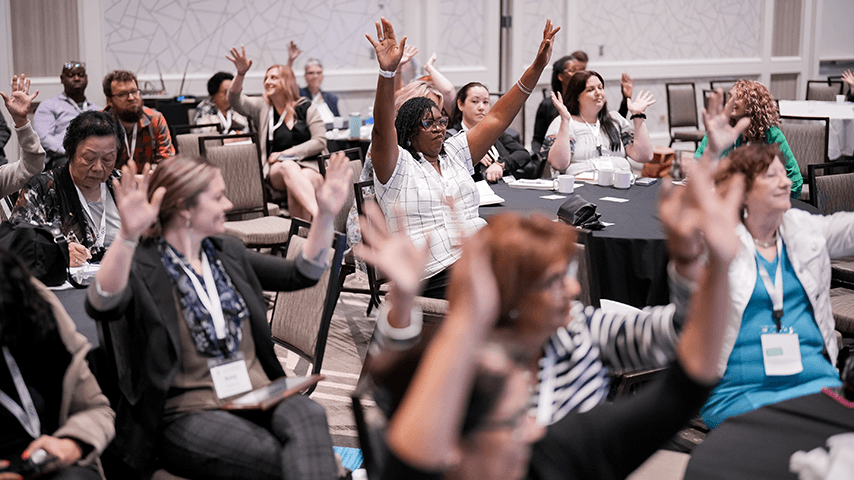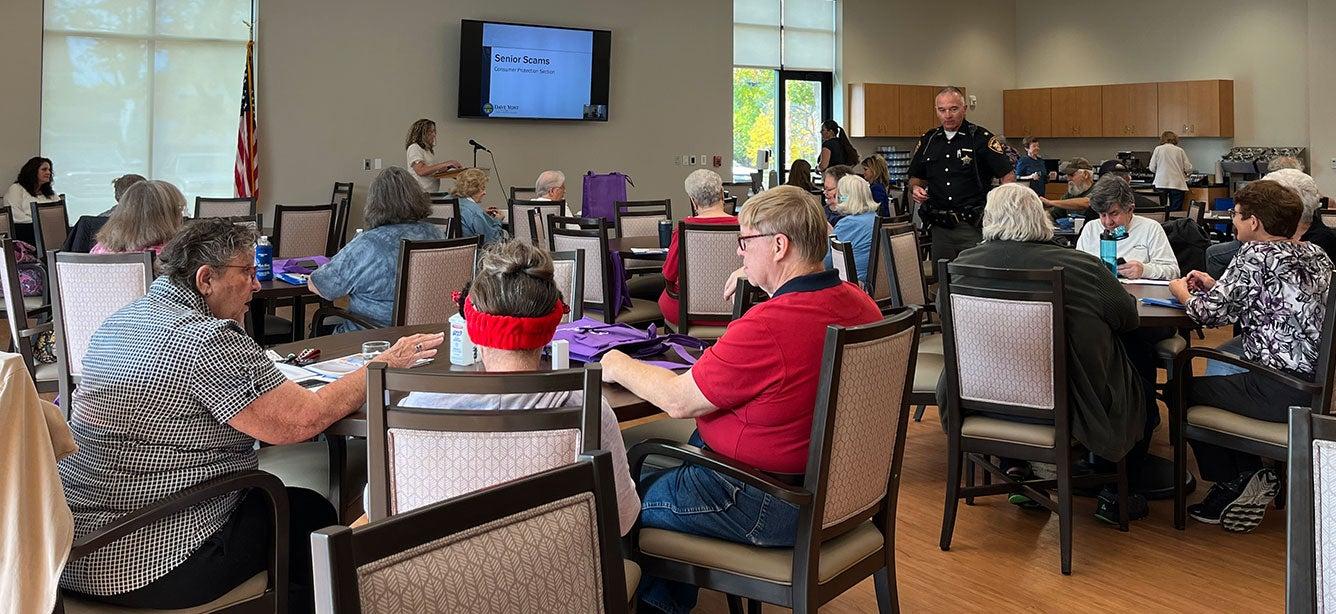How Senior Centers are Bringing Back Older Adults
4 min read

Senior centers are local, trusted community gathering spaces, providing access to information and opportunities for healthy aging and support in a highly social setting. Whether it is a place to share a meal, take a fitness class, learn a skill, exercise creativity, enroll in benefits, or simply to hang out with friends, senior centers are a second home to many older adults.
That all changed in March 2020 when senior centers closed their doors to in-person activity in response to the COVID-19 pandemic. The global message to older adults was to stay home and stay safe. That messaging was effective. In those early, dark days, senior centers responded with outreach, making thousands of phone calls, and focusing on basic needs—food and safety. The working assumption was that this would be a short-term situation, a few weeks at best.
As the pandemic progressed, senior centers innovated, creating high-tech, low-tech, and no-tech approaches engage older adults in programs and activities to support their well-being, providing vital connections to the community and to each other.
As public health guidance changed, and especially with the availability of vaccines, senior centers began a gradual shift back to in-person activity. But, unlike the suddenness with which they closed the doors, the return is gradual. Senior centers have adapted how they operate and have implemented mitigation strategies. Programming is slowly coming back, paced by infection rates, local guidelines, and the comfort level of older adults.
At a roundtable event at NCOA’s Age+Action Conference, senior center professional talked about the return to in-person activity at senior centers. Just as each senior center is unique, there was a range of experiences, from participation as good as or even better than pre-pandemic, to discouragement at the slow pace of re-engagement. One thing was clear—the doors are open, and centers are adapting to safely bring people back home to their senior centers.
Here are a few of the strategies and challenges senior center professionals discussed.
Make the most of your senior center space
- Think about your space. Social distancing is an effective mitigation strategy and increases comfort levels. Move programs into larger spaces that can allow for distancing. Have a small dining area? Hold two sittings, or serve meals in more than one room.
- When the weather allows, offer programs outdoors. Centers have invested in tents, outdoor sound systems, and portable heaters to create outdoor spaces that allow people to be together safely.
- Be flexible with schedules and use of space. By moving class times around, large spaces can be repurposed to hold more programs, and classes can spread out.
- Integrate technology into your facility. For example, use a camera and project the instructor on a large screen so participants can maintain safe distances.
- Take all the recommended measures to not only provide for a safe and sanitized environment, but to make sure those efforts are visible to people who use the center. This will go a long way in increasing comfort levels.
Food is a key way for senior centers to reach older adults
- Events, and especially those with great food, draw people in. Successful events have included lunches with themes and high-quality food, farm to table dinners, bringing in professional chefs, bingo with sponsors and higher value prizes, food trucks, and meals accompanied by professional entertainment. Give people an irresistible reason to come to the center.
- Meals and senior centers go hand in hand. Returning to the traditional congregate meal has been a challenge. For some centers, declining numbers—a trend before the pandemic—have worsened. Innovations including grab and go meals, restaurant partnerships, and other new models that are showing great promise in revitalizing meal programs.
Clear communication helps reassure older adults about senior center safety
- Not everyone will be comfortable with returning to activities that they were told were unsafe. Talk to people about how they are feeling, and respond to meet their comfort level. Be clear about the steps the center is taking to limit risk, and what people can do to manage their own risk—including getting COVID boosters.
- Use effective marketing messages to let people know the center is open and what measures it has taken to minimize risks. Incorporate NCOA’s “Come Home to Your Senior Center” videos: How Senior Centers are Serving Older Adults Post-Pandemic and How Senior Centers are Addressing Social Isolation Through Connection.
- Centers developed new channels of communication during the pandemic, including regular robocalls, Facebook and Facebook live, Twitter, Instagram, TikTok, and Constant Contact. Keep the buzz going!
Senior centers should offer older adults a choice
- Some people are not ready to return to in-person activities, and, if there is a silver lining to the pandemic, it is the expanded availability of tools and strategies to reach people in the community who are not able to come to the center.
- Hybrid programs, with an option to attend in-person or virtually, are being offered successfully. A Zoom meeting projected onto a large screen TV brings people into the center from their living rooms. Some centers are investing in more sophisticated meeting solutions, like Owl Labs' 360-degree camera, microphone, and speaker.
- Centers are also using technology to virtually bring guest speakers to the center, expanding opportunities to provide education and programs.
- At-home or take-home programs were successful during the pandemic, with program materials like craft supplies, curriculum, or food delivered or available as grab and go. Keeping this as an option is a meaningful choice for many participants.
Staffing and technology remain as challenges for senior centers
- The workforce issues that have plagued many industries have impacted senior centers as well. Reports of difficulties filling vacancies across all roles are common. This includes challenges in getting leaders and instructors for classes.
- Technology was, and remains, a critical tool to connect older adults to the benefits of senior center participation. But access to that technology is not universal. Pockets of the population, including older adults and seniors center themselves, lack access to broadband, to devices, or to the knowledge and skill required to use technology effectively.
- Among the barriers to attendance for some participants: requirements for pre-registration and limited opportunities for casual drop-in activities that were needed to manage changed capacity limits and allow for contact tracing; and mask requirements. As one senior center director said, “People don’t want to be shoo'd out of the building, they want to hang out with their friends.”
As we approach two and a half years of living in a pandemic, senior centers should celebrate all that has been accomplished. The world will never quite be the same, that is certain. Some programs will not come back. And, neither will some people.
It's important to take the time to acknowledge the losses everyone has experienced. It's also important to continue to evaluate what is working and what isn’t and to put energy into the areas that have the most impact.
NCOA would like to know more about how senior centers are bringing people together so we can share your best practices and seek solutions to your challenges together. Please take a few minutes to complete this survey about your center’s experiences, successes, and challenges.




